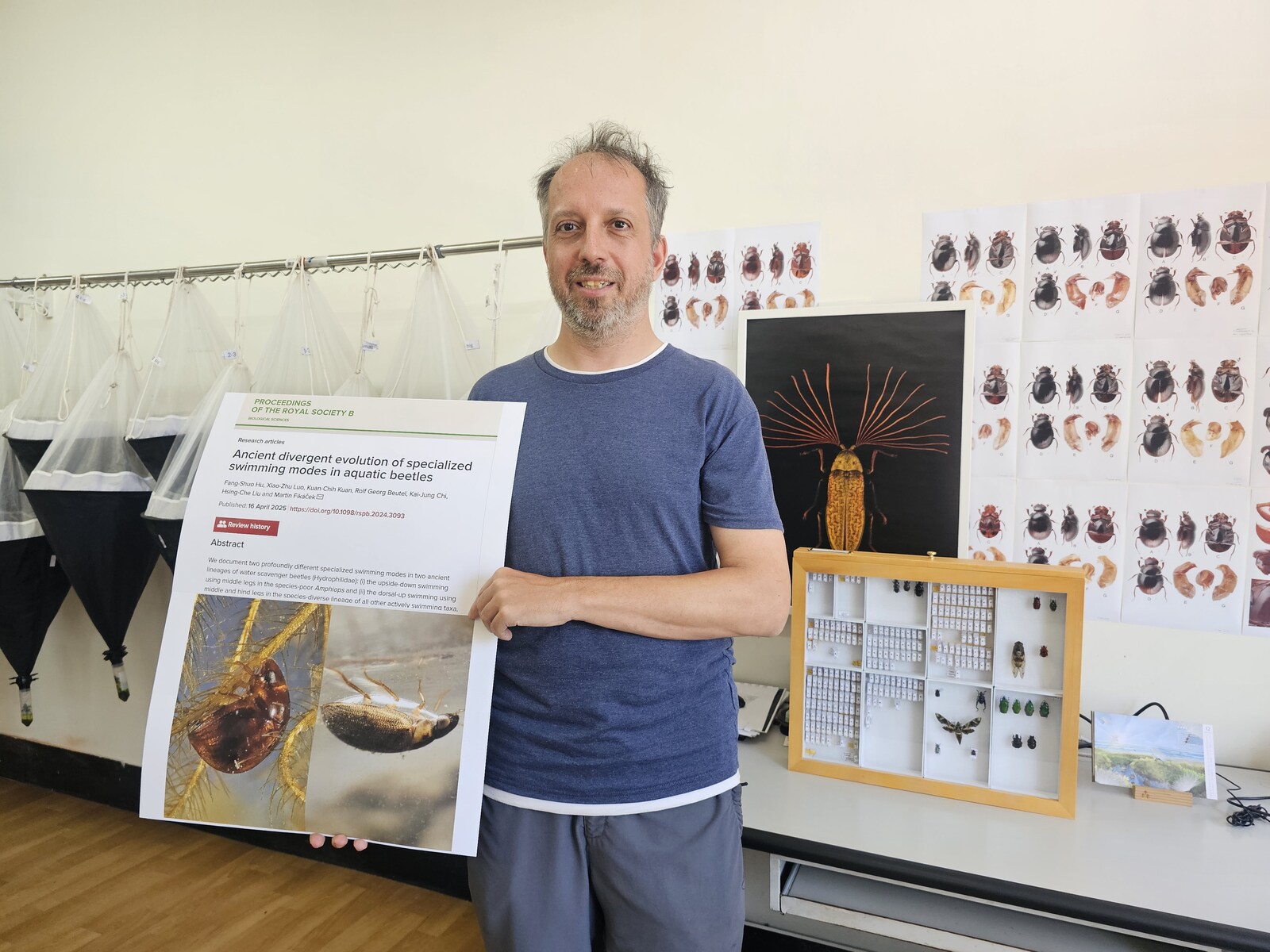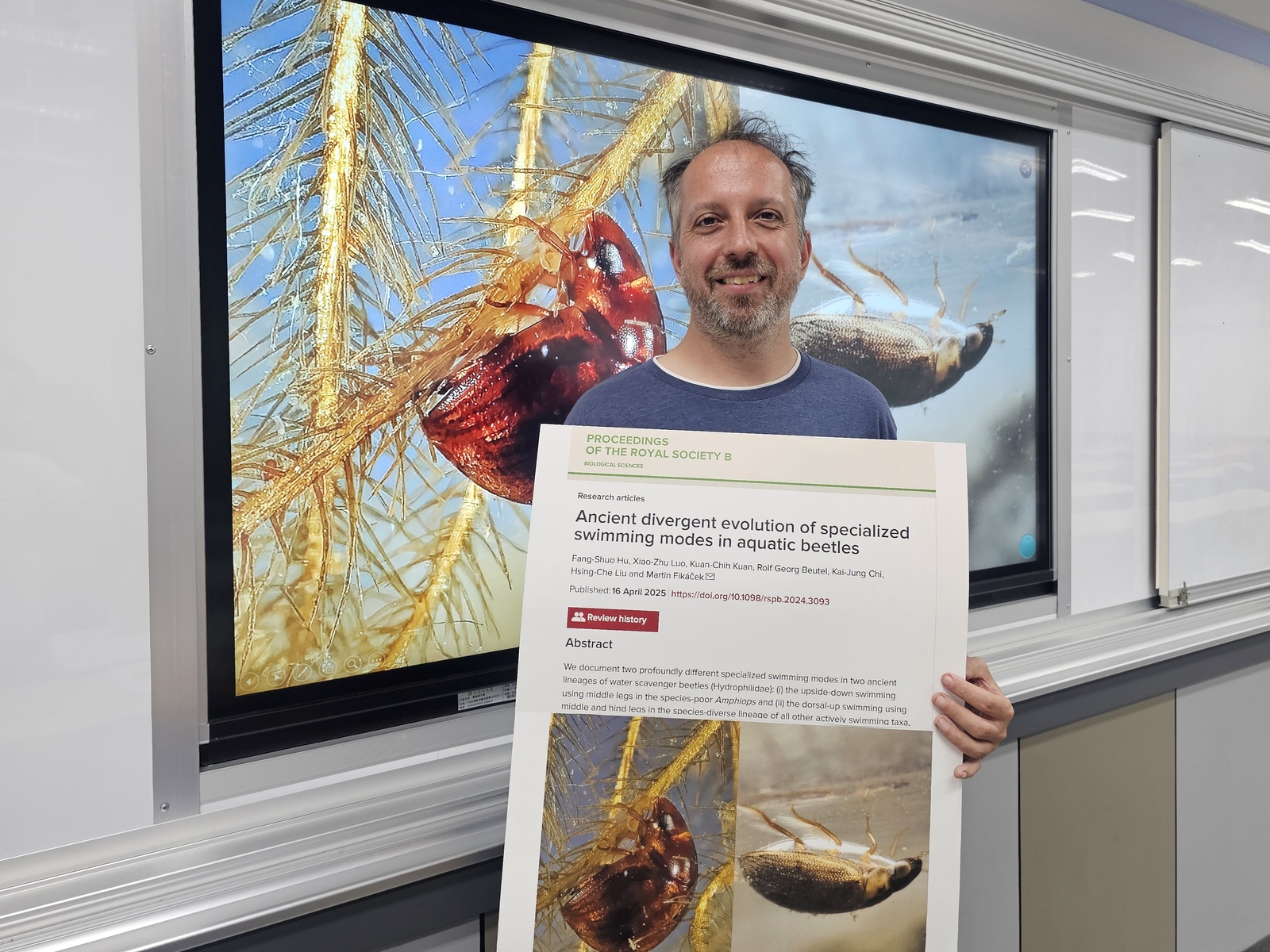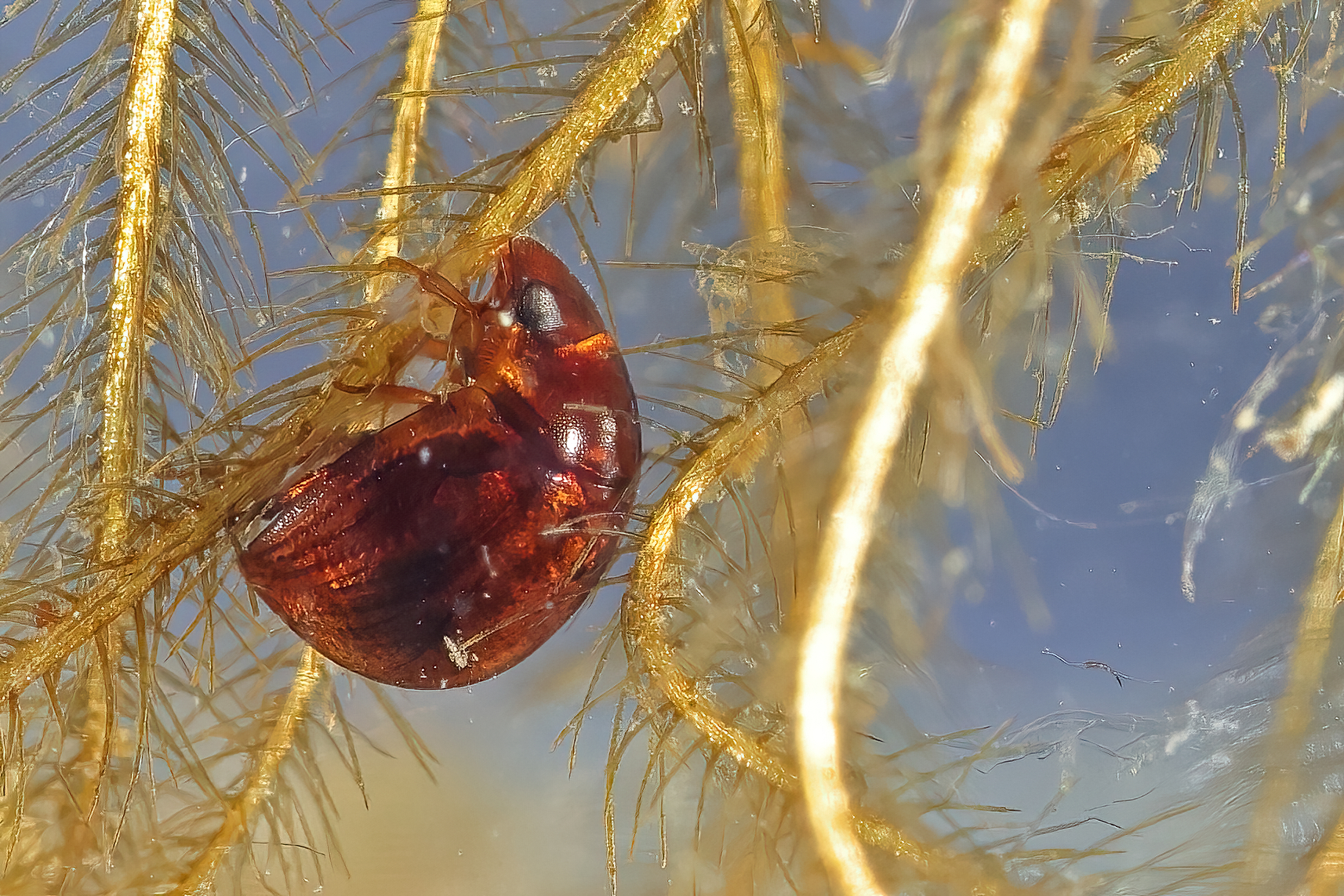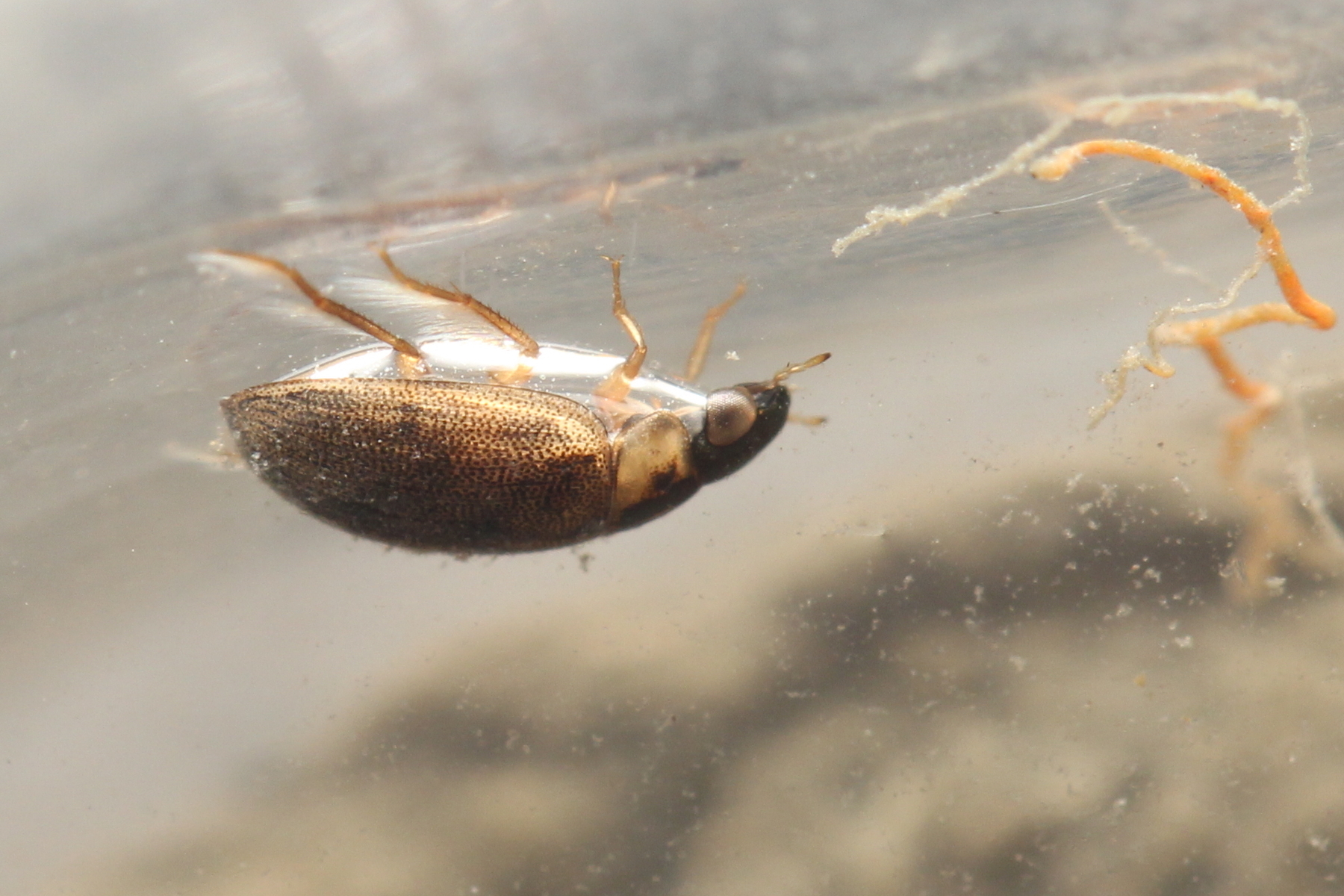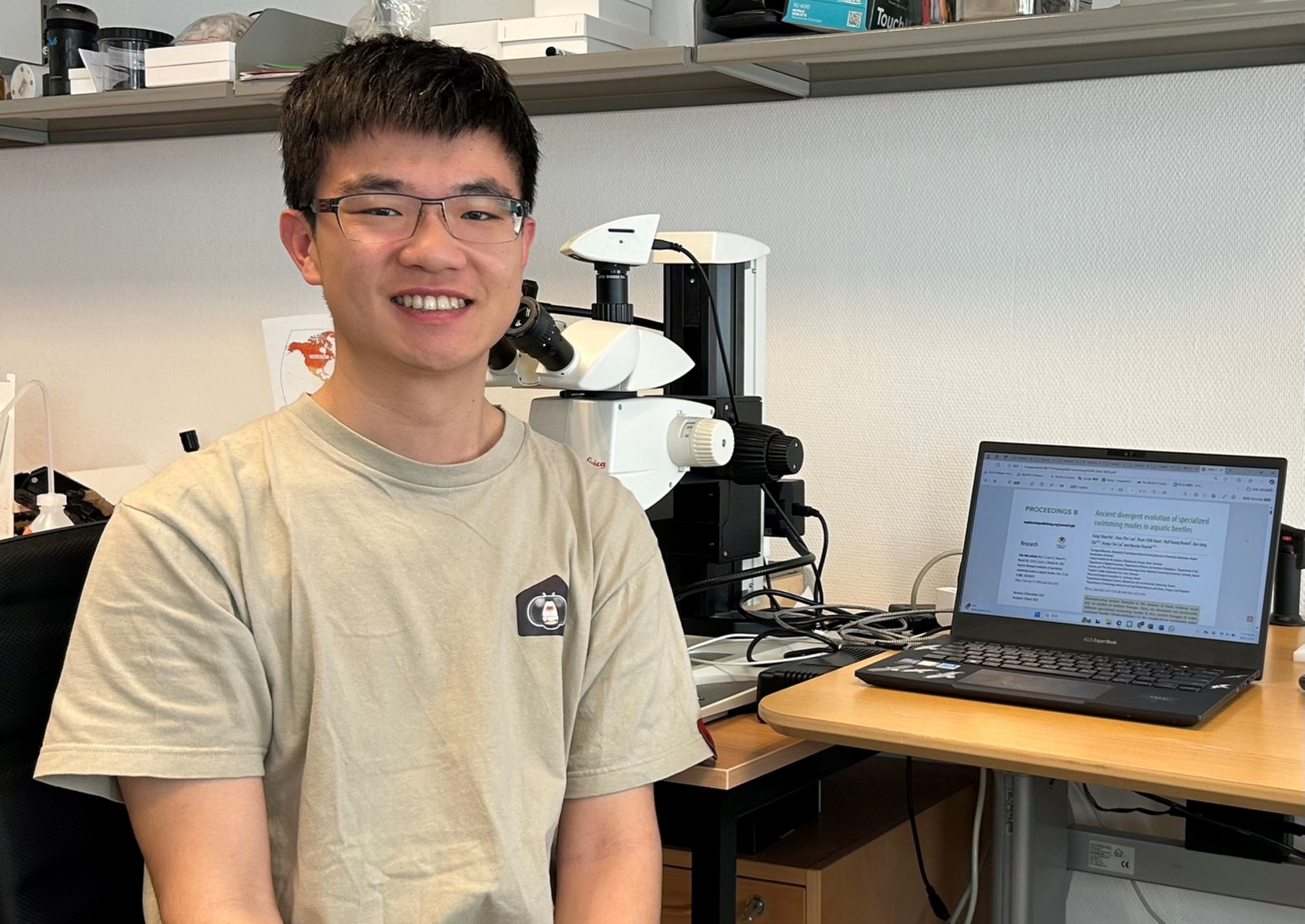New hypothesis on the evolution of swimming: NSYSU research reveals the lifestyle of aquatic beetle ancestors
2025-04-21
Even the lifestyle and behavior of insects that have long been extinct and have no fossil evidence can be revealed! Assistant Professor Martin Fikáček from the Department of Biological Sciences at National Sun Yat-sen University (NSYSU), in collaboration with academic institutions from Denmark, Germany and Taiwan, uses data about swimming behavior and body structure of modern water beetles to reconstruct how their ancestors lived and behaved in the past. The research team used micro-CT scanning to discover that the two related beetle groups with different swimming ways share a unique internal structure that avoids body deformation while swimming. This structure, absent in non-swimming beetles, shows that their swimming abilities originated from the same ancestor. It led to a new hypothesis of how swimming evolved in ancient water beetles and demonstrated a novel approach how to reconstruct ancestor life style using modern species. The research was published in the prestigious journal Proceedings of the Royal Society B-Biological Sciences.
Assistant Professor Fikáček explains that water scavenger beetles (Hydrophilidae) are inhabiting aquatic environments like ponds or streams, yet many of them cannot swim. A single lineage of these beetles got the ability to swim, but they do so in two different ways. The beetles with elongated and streamlined bodies, such as Berosus, swim by using their middle and hind legs. Those with ball-like bodies, such as Amphiops, swim upside down by using their middle legs only.
The research team employs high-speed video tracking, micro-CT scanning, behavioral experiments, and macroevolutionary modeling to study the swimming behavior and body structure of water beetles that live in Taiwan today. They find that globular beetles live among dense water lilies and other floating aquatic plants. Such an intertwining environment protects them from predators but requires beetles to maneuver themselves among the plants. Their globular body shape effectively reduces energy loss during leg movements, allowing for more stable and maneuverable swimming. In contrast, beetles with streamlined bodies live in more open habitats. They are exposed to predators and need to swim quickly to escape from them. Their longer bodies help them enhance their swimming speed. The researchers proposed that since the water environment limits the way in which the beetles can move, life in two different environments compelled the beetles to develop two different swimming styles.
Fikáček's research team used molecular evolutionary evidence and micro-CT scanning analysis to discover that streamlined and ball-like body beetles share a unique internal skeletal structure, yet absent in non-swimming beetles. This led the team to propose that swimming modes of modern beetles evolved independently from a common ancestor, indicating a single evolutionary origin of swimming. The ancestral swimming beetles were bad swimmers, but some of them improved their swimming under environmental pressures in two alternative ways, one for quick escape from predators and the other for navigation through dense water plants. The ancestral badly swimming groups were not able to compete with these two groups of excellent swimmers and went extinct.
Fikáček emphasized that even without fossil evidence it is still possible to trace or infer the evolutionary origin of swimming, despite the ancestral swimming beetles got extinct. By an interdisciplinary research using modern scientific methods to analyze the swimming behavior of living beetles, researchers can infer the ancestral swimming mode and propose a new evolutionary hypothesis. This study explored the evolution of water beetle swimming behavior, offering new insights into the evolution of the lifestyle of ancient water beetles. It also provided a valuable novel approach for reconstructing and tracing ancestral traits in other biological studies.
Members of the international and interdisciplinary research team also include Fang-Shuo Hu, a doctoral student at the Natural History Museum of Denmark, Xiao-Zhu Luo from the Leibniz Institute for the Analysis of Biodiversity Change in Germany, Kuan-Chih Kuan from the Department of Applied Economics at National Chung Hsing University, Rolf Georg Beutel from Jena University in Germany, Kai-Jung Chi from the Department of Physics, Department of Life Sciences and Center for the integrative and Evolutionary Galliformes Genomics at National Chung Hsing University, and Hsing-Che Liu from Observer Ecological Consultant Co., Ltd.
Journal link: https://royalsocietypublishing.org/doi/10.1098/rspb.2024.3093
